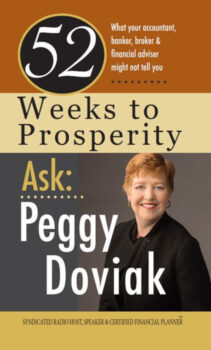 Fifty-six years ago, Martin Luther King Jr. delivered his iconic “I Have a Dream” speech, and next week, we are celebrating both the man and his message. Dreaming is important. Much of our focus originates in the dreams we have—getting a job, owning a home, or having a prosperous life. However, building a strategy around dreams can be difficult.
Fifty-six years ago, Martin Luther King Jr. delivered his iconic “I Have a Dream” speech, and next week, we are celebrating both the man and his message. Dreaming is important. Much of our focus originates in the dreams we have—getting a job, owning a home, or having a prosperous life. However, building a strategy around dreams can be difficult.
When implementing financial dreams, it’s important to transform them into financial goals. What’s the difference? While dreams can be vague, financial goals are very specific. To be achievable, you need to have a time horizon, dollar amount, and an assumption of a reasonable rate of investment return.
For example, you might tell me that you want to have enough money to retire early and travel. Just a few adjustments can turn your desires into a great financial goal. First, what does “retiring early” mean? Retiring at 62? 60? 55? With a specific number of years, so you can create a savings schedule. I had a prospective client who was 40 years old and wanted to retire at 50. His goal sounded impressive, but he hadn’t saved any money! When I showed him that he would need to save more than he earned in salary, he modified his time horizon to retiring at a more traditional age.
Additionally, rather than striving for “enough money,” look at your expenses. What are you spending today? Track your cash flow for two or three months, so you don’t underestimate what you will need. What bills are nondiscretionary, and what spending can you control? Be careful about ignoring or sharply limiting your discretionary spending, however, as it will likely continue during retirement.
Further, which expenses will be eliminated, and which will increase? For example, you may pay off your mortgage but incur additional healthcare costs. Going back to our retirement example, how do you want to travel? Do you want to cruise once or twice a year, see the world, or take the grandkids camping and fishing for a week at a local lake? These trips have wildly different prices, and you need to budget appropriately.
Once you know your time horizon and have created your best estimate for retirement expenses, then you are ready to determine your market return assumptions. Create an asset allocation that takes into account both your growth needs and your risk tolerance level.
Now, you’re ready to clarify your financial dream. Utilizing a moderate asset allocation, you can retire at 62 with an income level of 90% of your current income, allowing you to make an overseas trip every other year. See the difference in the statements? With specific information, you can now calculate how much you will need to save to accomplish your goals.
Having a concrete plan can help as you save for shorter term dreams, as well. For example, if you are planning a vacation, try to determine the trip’s expenses, then divide that bill by the number of months before you leave, and try to lay back enough to pay it off. Or to avoid January “sticker shock,” look at what you spent last year in holiday gifts. Try to save enough each month to cover the costs in December.
You may have noticed that I didn’t mention earning a market return as you saved for your vacation or presents. Remember that investing in the stock market is only appropriate for longer-term goals because of volatility and risk. Financial gurus may give you different appropriate investment timelines, but I would be hesitant putting money into the market unless you have at least three years before the goal, and even then, be careful.
Applying dollar values and data to your dreams may make them seem less than glamorous. However, it gives you the tools to be able to succeed. Once you know the steps you need to take, you can turn your dreams into reality.











